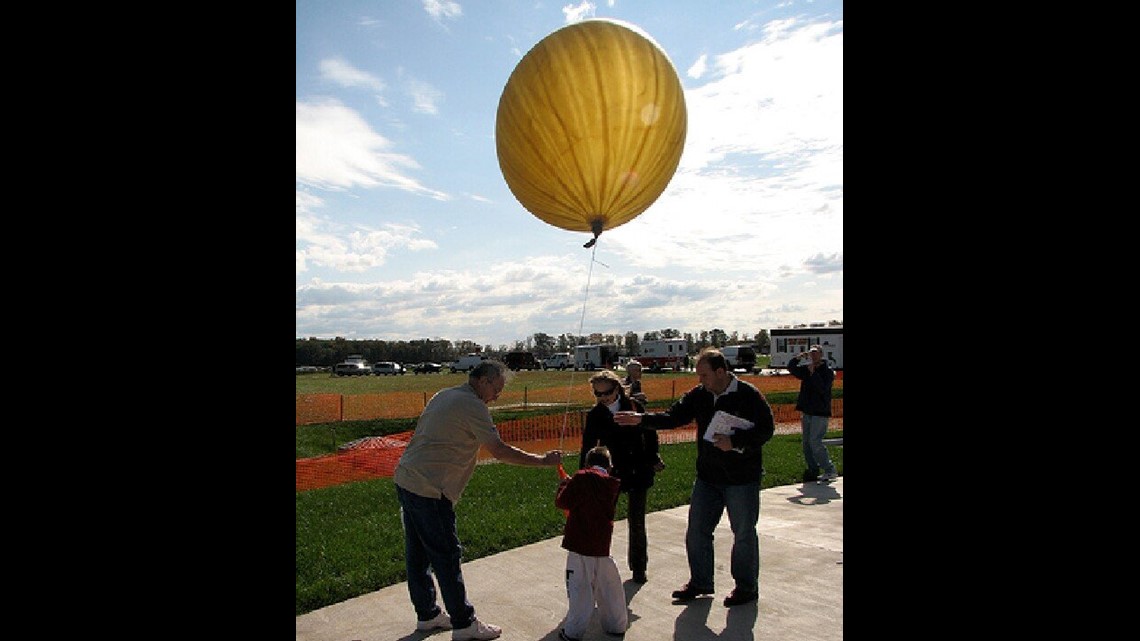You might be surprised to learn how important this is to your everyday life! Each morning and evening around 6 o'clock, an expendable instrument package is secured to a large balloon inflated with hydrogen. As the balloon is launched, it travels up at about 1,000 feet per minute. As it ascends, sensors measure the pressure, temperature, and relative humidity. These sensors are linked to a battery-powered radio transmitter that sends these measurements to the ground. You may be surprised to learn that wind speed and direction are NOT measured. That's because the balloon is tracked using GPS. You can figure out the wind speed and direction by looking at the location within the atmosphere and on a map. Some weather balloons do measure wind speed. These are call "rawinsondes." The technical term for most weather balloons is "radiosonde."
A typical weather balloon is in the air less than two hours. As the balloon ascends through the atmosphere where the pressure goes down, the size of the balloon gets bigger and bigger. At high elevations, it can be exposed to temperatures as cold as -130°F and an air pressure less than 1% of what's found at the Earth's surface. If there's a strong jet stream overhead, it can travel at speeds exceeding 250 mph! Because the pressure decreases with height, it really affects the size of the balloon. At ground level, the balloon is about 5 feet in diameter, but can be 20-25 feet in diameter when it bursts. A small, orange parachute then opens which allows for a safe descent of the equipment.


Typically, weather balloons launched from Davenport, Iowa end up in Illinois, but have traveled into Wisconsin and Minnesota as well. Rarely are they returned to the National Weather Service. However, there is printed information on it which tells a discoverer where it came from and how to send it back.
Davenport, Iowa is the perfect place to measure the upper-air weather conditions for the large cities to our east. The information collected is put into weather supercomputers which simulate what weather will occur in the future. You've heard of Meteorologists reference "weather models." A lot of the data that goes into the models comes from weather balloons. If we didn't have weather balloons, we wouldn't be able to forecast the weather for 8, let alone 14 days!
In addition, special weather balloon launches occur during times of severe weather to understand the processes going on above so we can get weather warnings to more people ahead of time. Balloon data also has a significant impact on air travel at the busy hubs in Chicago and Milwaukee by showing where strong wind is blowing. Balloons cannot be launched closer to these cities because they could interfere with air travel.
-Meteorologist Eric Sorensen

